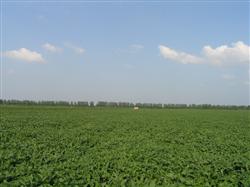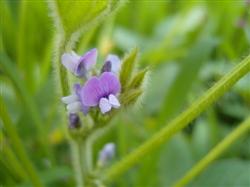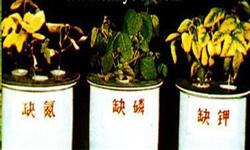Extra-root topdressing technology in soybean production

In soybean production, paying attention to extra-root topdressing is an important measure to increase yield and income. Therefore, it is necessary to grasp the characteristics of fertilizer requirements of soybean at different growth stages and supplement nutrition in time to meet the needs of soybean growth and development, so as to achieve the purpose of increasing production and income. Principles of fertilization: suitable for phosphorus and potassium, less nitrogen, micro-application of molybdenum. Because there are symbiotic nodules in the roots of soybean, which can fix nitrogen in the air, the demand for external nitrogen application of soybean is relatively less, while the demand for phosphorus and potassium is relatively more. In addition, when soybean is deficient in molybdenum, it can hardly form root nodules, which will lead to the adverse consequences of less clamping and low 1000-grain weight, which will affect the yield. Fertilization time: should choose cloudy and windless weather, sunny days should be carried out before 10:00 and after 4 p.m. Spraying requirements: soybean is a dicotyledonous plant, the stomata on the back of the leaf are more than the surface of the leaf, and the spongy tissue on the back of the leaf has strong water absorption capacity, so both the positive and negative sides of the leaf should be sprayed when spraying leaf fertilizer. But the concentration of liquid fertilizer should be appropriate to avoid causing fertilizer damage. First, the seedling stage: mainly spraying phosphate fertilizer, especially in the land where there is no base fertilizer. The critical period of phosphorus nutrition of soybean is in the seedling stage, so the supply of adequate phosphorus nutrition at this time is beneficial to the growth and development of soybean and enhance stress resistance. In the seedling stage, the spray concentration is 2%-4%, and the superphosphate leaching solution is sprayed once every 10-15 days, twice in a row. Second, vegetative growth period: before flowering, soybean vegetative growth is the most exuberant period, mainly stem and leaf growth. Nitrogen is not only an indispensable component of protein and nucleic acid metabolism in crops, but also an indispensable element in chlorophyll synthesis, but if nitrogen is not applied properly, it is also easy to cause plant crazy growth, lodging and vulnerable to diseases and insect pests. Therefore, nitrogen should be applied according to the principle of more application in weaker plots and less application in more prosperous plots. Potassium can increase crop cellulose, grow tough stems, enhance the ability of disease and insect resistance and lodging resistance, but also enhance the ability of cells to absorb water, which is conducive to drought resistance. Molybdenum can promote nitrogen metabolism and enhance the nitrogen fixation ability of soybean. During the vegetative growth period, the foliar surface should be evenly sprayed with the proportion of 1% urea, 0.3% potassium dihydrogen phosphate, 0.5% potassium dihydrogen phosphate and 0.01% sodium molybdate. Once every 7 to 10 days, spray for 2 times in a row. The period from the first flowering to the clipping stage of soybean is the period of both vegetative growth and reproductive growth, and the branches and leaves are more exuberant. The mixed application of 0.1% photosynthetic micro-fertilizer and 1% soybean king plus 5% 25 mg / kg "920" can enhance the photosynthesis of soybean, prevent falling flowers, promote pinch and bulge, increase yield and improve quality.
- Prev

Safe use technology of pesticides in the production of high-oil soybean
Although soybeans can fix free nitrogen in the atmosphere by nodules, this accounts for only 30% to 50% of their needs, and the rest needs soil supply. Therefore, topdressing nitrogen fertilizer to soybean can strengthen stalk and branch, expand leaf area, enhance photosynthesis and improve stress resistance. Plots with poor soil fertility should be chased at the seedling stage.
- Next

Identification and remedy of soybean deficiency
1. Nitrogen deficiency soybean nitrogen deficiency, leaves become light green, slow growth, leaves gradually yellow. Nitrogen fertilizer should be applied in time, 5 kg ~7.5 kg urea can be applied per mu, or foliar fertilizer should be sprayed with 1%~2% urea aqueous solution, sprayed once every 7 days or so, and sprayed 2 ~3 times in total. 2. Early leaf color of phosphorus deficient plants...
Related
- The first cup of black tea in spring, the flavor and history of tea gardens in Kenya, Africa
- The computer can not only choose potatoes, but also grow tea rice. AI will grow winter oolong tea champion.
- It is not only the inflated tea bitten by insects, but also engraved with the four seasons tea in Beipu.
- The Oriental Beauty Tea Festival in Zhuxian County takes the stage at the weekend to experience the plus-size feast of oil tea.
- & quot; Oriental Beauty Tea & Exploration of Emei in Hsinchu, the hometown of quot;
- The new variety of strawberry "Tainong 1" dessert is the first choice with mellow aroma. Crimson gorgeous
- History of Tea in Taiwan: from Wild Inner Mountain to Export Tea Garden
- Two types of Taiwan Oriental Beauty Black Tea won the British three-Star Award for Childhood Tea Xiang Zhang Jiaqi changed from pilot to champion tea maker.
- Banana species and varieties: the planting history of Taiwan Xianren banana and dwarf banana is long, is banana disease resistant?
- Coffee planting Technology: Qianjie Coffee from Seedling to harvesting

